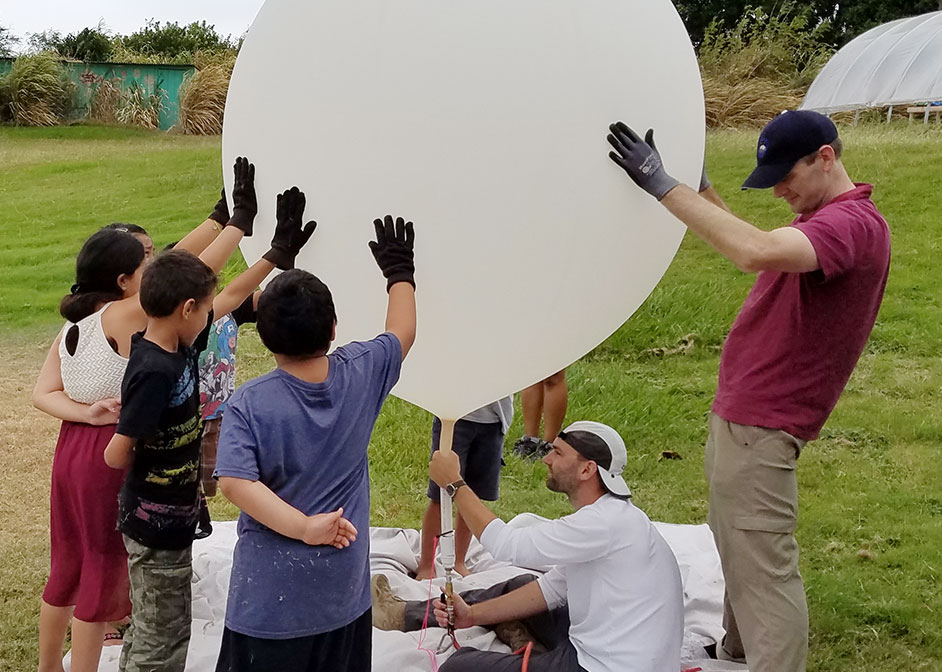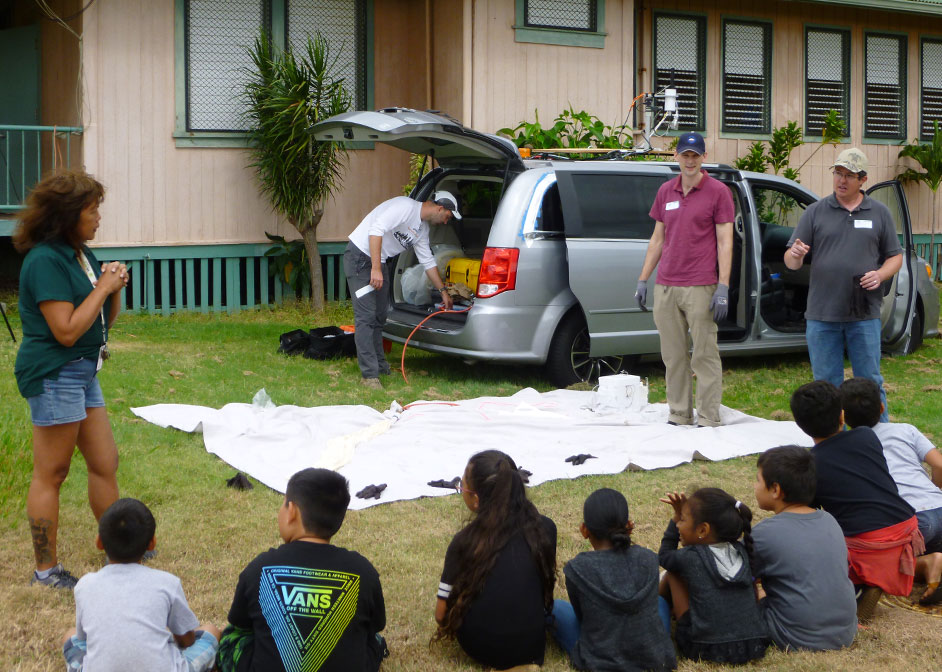Schoolkids Launched Air Quality Balloon, Learned About NASA
While conducting research on sulphur dioxide emissions after volcanic eruptions, University of Houston researchers set up a collaboration with the Naalehu Elementary School, on the big island of Hawaii. School officials gave the researchers permission to install long-term monitoring equipment there.

Related Link: NSM Breakthrough
Science Demonstration Featured Research Balloon Launch
As a token of their gratitude, UH researchers taught the students about the process of science, and offered them the opportunity to help launch a research balloon to monitor sulphur dioxide levels.
“The principal was really excited about the opportunity to show the kids a live science experiment,” said Elizabeth Klovenski, a Ph.D. student in atmospheric sciences, and one of the scientists giving the demonstration. Also included was James Flynn, a research assistant professor in the Department of Earth and Atmospheric Sciences, along with St. Edward’s University assistant professor of physics Paul Walters, and St. Edward’s University associate research scientist Mark Spychala.
The demonstration took place on the last day of summer school, with children ranging in ages from 6 to 10. During the demonstration, researchers talked about the different research conducted by NASA, as well as opportunities for higher education.
“They all wanted to know how long I’d been in school,” Klovenski said. “For many of the students, this was their first exposure to both NASA and scientists.”
Recent Kilauea Eruption Exacerbated Air Quality Issues
On May 3, Kilauea, a volcano on the island, entered a new eruptive phase. The opening of new fissures led to the release of lava bombs, volcanic ash and gases. This eruption was preceded by three decades of continuous volcanic activity, with elevated levels of volcanic emissions.

During volcanic eruptions, one of the big concerns is sulphur dioxide emissions. Sulphur dioxide emissions pose significant air quality concerns, causing high levels of volcanic smog, called vog. This produces acid rain and air pollution downwind of a volcano.
With Naalehu located about 80 kilometers downwind of Kilauea, inhabitants are dealing firsthand with the effects of vog.
Volcanic Smog Has Significant Impact on Health
Communities affected by vog face health concerns, including increased susceptibility to respiratory conditions, such as asthma. The recent eruption has only exacerbated ongoing health concerns.
“Air quality is of prime importance to the Naalehu community, as it impacts their health,” Flynn said. Klovenski added that, “they want more accurate vog predictions.”
Flynn’s team installed air quality monitors at Naalehu Elementary School, which will offer continuous monitoring. This equipment provides real-time information on air quality, and will test new methods for monitoring. Data collected will be shared with the scientific community, including the University of Hawaii-Manoa’s vog prediction team.
Along the way, this will provide the Naalehu community an opportunity to be involved in monitoring local air quality, as well as offering Flynn’s research group an opportunity for science outreach.
“They were all very interested, and very supportive,” said Flynn. “We were really lucky to find them, and look forward to working with them again in the future.”
This project was funded by a NASA rapid response grant.
- Rachel Fairbank, College of Natural Sciences and Mathematics